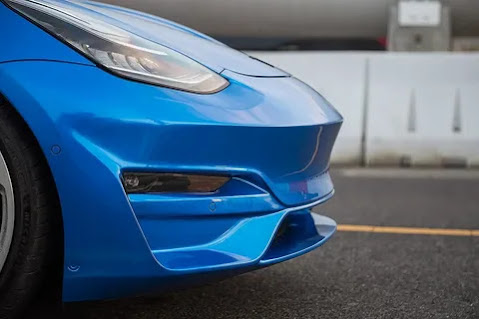Shaping the Automotive Face: A Look at the Global Fascia Market
 |
| Global Fascia Market |
The Global Automotive Fascia Market is estimated to
be valued at US$ 33.40 Bn in 2024
and is expected to exhibit a CAGR of
5.1% over the forecast period from 2024 to 2031.
Market Drivers
Several factors are propelling the growth of Global
Automotive Fascia Market Share . Increasing consumer demand for
vehicles with sleek and stylish designs is a major driver. The rising
popularity of luxury cars, which often feature intricate fascia designs,
further fuels market expansion.
Additionally, stringent regulations regarding pedestrian safety are
mandating the integration of features like airbags and crumple zones into
fascias, driving innovation and market growth in the Global Automotive Fascia
Market.
PEST Analysis
A PEST analysis provides a comprehensive view of the
external factors influencing the Global Automotive Fascia Market.
Political:
Government regulations on fuel efficiency and safety standards can
significantly impact the design and materials used in fascias. Trade policies
and import duties can also affect the cost and availability of fascia
components.
Economic:
Fluctuations in fuel prices and economic downturns can dampen consumer demand
for new vehicles, impacting the Global Automotive Fascia Market.
Social:
The growing preference for car personalization and aftermarket modifications
presents an opportunity for the market. Increasing urbanization and rising
disposable incomes in developing economies are also expected to drive demand.
Technological:
Advancements in material science are leading to the development of lighter and
more durable fascia components. Integration of advanced driver-assistance
systems (ADAS) sensors within fascias is another key trend shaping the Global
Automotive Fascia Market.
SWOT Analysis
A SWOT analysis helps identify the strengths,
weaknesses, opportunities, and threats specific to the Global Automotive Fascia
Market.
Strengths:
The market boasts a strong presence of established manufacturers with expertise
in fascia design and production. Additionally, the ability to cater to diverse
regional preferences is a key strength.
Weaknesses:
The reliance on traditional materials like plastic can limit innovation and
hinder efforts to achieve lightweighting. Dependence on the overall automotive
industry's health can also be a weakness.
Opportunities:
The growing demand for electric vehicles (EVs) presents an opportunity to
develop fascias optimized for aerodynamics and range. Expansion into emerging
markets with rising car ownership rates offers further potential.
Threats:
Fluctuations in raw material prices and stricter environmental regulations can pose
challenges. The increasing adoption of autonomous vehicles might necessitate
significant changes in fascia design, potentially disrupting the market.
Geographical Regions
The Global Automotive Fascia Market is spread across
various geographical regions, each with its own growth dynamics.Asia Pacific is
expected to witness the fastest growth due to the increasing demand for
vehicles in developing economies like China and India.Europe and North America
are mature markets with a high focus on technological advancements and safety
regulations.The demand for luxury vehicles in the Middle East and Africa is
expected to drive fascia market growth in these regions.
The Global Automotive Fascia Market is poised for
steady growth driven by factors like rising consumer demand for aesthetics,
safety regulations, and technological advancements. By understanding the market
drivers, external influences, and regional variations, companies can develop
effective strategies to capitalize on the numerous opportunities within the
Global Automotive Fascia Market.



Comments
Post a Comment